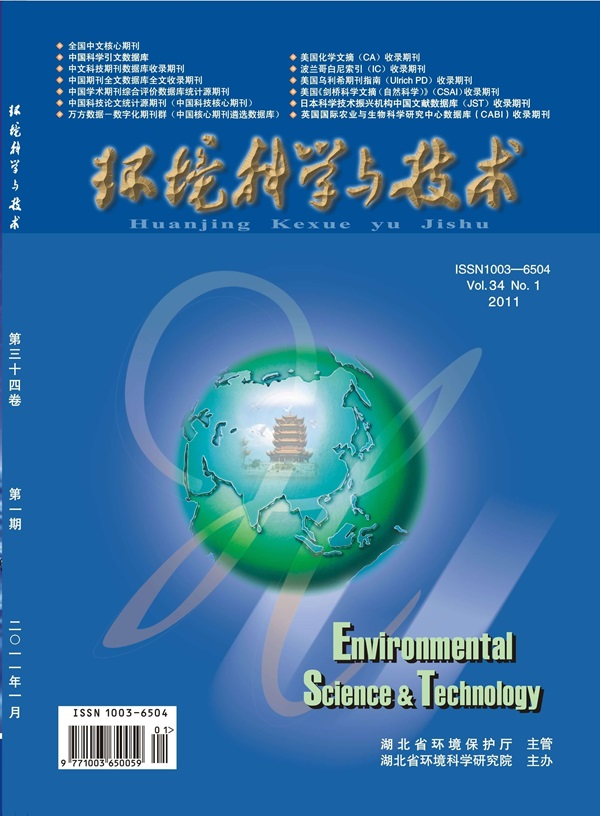Predicting the Sorption Capacity of Perfluoroalkyl and Polyfluoroalkyl Substances in Soils: Meta-Analysis and Machine Learning Modeling.
IF 10.8
1区 环境科学与生态学
Q1 ENGINEERING, ENVIRONMENTAL
引用次数: 0
Abstract
Predicting the soil sorption capacity for perfluoroalkyl and polyfluoroalkyl substances (PFAS) is pivotal for environmental risk assessment. However, traditional experimental methods are inefficient, necessitating computational model development. We compiled a comprehensive data set including 44 PFAS and 405 soils from 35 literature reports, conducted a meta-analysis, and constructed robust machine learning models. Machine learning models using LightGBM with RDKit or PaDEL descriptors achieved R2 of 0.89, 0.88, and 0.72, RMSE of 0.28, 0.28, and 0.36, and MAE of 0.18, 0.19, and 0.28 for cross-validation, internal test set, and external test set, respectively. SHapley Additive exPlanation (SHAP) analysis identified PFAS properties as the primary influence on sorption, followed by environmental conditions and soil properties. We found that low SOC (<0.56%) minimally affects PFAS sorption. A pH of 6 is the boundary point where anionic PFAS are mainly attracted or repelled by electrostatic interaction, and higher pH may enhance the PFAS soil sorption through cation bridges. Although van der Waals forces and polar interactions enhance the sorption of PFAS with carbon chains ≥8, the introduction of polar structures containing oxygen, nitrogen, and sulfur into PFAS will lower hydrophobicity and sorption affinity. This study provides accurate predictive models, which are helpful for environmental decision-making.预测土壤中全氟烷基和多氟烷基物质的吸附能力:荟萃分析和机器学习建模。
预测土壤对全氟烷基和多氟烷基物质(PFAS)的吸附能力是环境风险评价的关键。然而,传统的实验方法效率低下,需要开发计算模型。我们从35篇文献报告中收集了包括44个PFAS和405个土壤在内的综合数据集,进行了meta分析,并构建了稳健的机器学习模型。使用LightGBM和RDKit或PaDEL描述符的机器学习模型在交叉验证、内部测试集和外部测试集上的R2分别为0.89、0.88和0.72,RMSE分别为0.28、0.28和0.36,MAE分别为0.18、0.19和0.28。SHapley添加剂解释(SHAP)分析发现PFAS特性是影响吸附的主要因素,其次是环境条件和土壤特性。我们发现低SOC(<0.56%)对PFAS吸附的影响最小。pH值为6时,阴离子型PFAS主要受静电相互作用吸引或排斥,pH值越高,PFAS通过阳离子桥对土壤的吸附能力越强。虽然范德华力和极性相互作用增强了碳链≥8的PFAS的吸附,但引入含氧、氮和硫的极性结构会降低PFAS的疏水性和吸附亲和力。本研究提供了准确的预测模型,有助于环境决策。
本文章由计算机程序翻译,如有差异,请以英文原文为准。
求助全文
约1分钟内获得全文
求助全文
来源期刊

环境科学与技术
环境科学-工程:环境
CiteScore
17.50
自引率
9.60%
发文量
12359
审稿时长
2.8 months
期刊介绍:
Environmental Science & Technology (ES&T) is a co-sponsored academic and technical magazine by the Hubei Provincial Environmental Protection Bureau and the Hubei Provincial Academy of Environmental Sciences.
Environmental Science & Technology (ES&T) holds the status of Chinese core journals, scientific papers source journals of China, Chinese Science Citation Database source journals, and Chinese Academic Journal Comprehensive Evaluation Database source journals. This publication focuses on the academic field of environmental protection, featuring articles related to environmental protection and technical advancements.
 求助内容:
求助内容: 应助结果提醒方式:
应助结果提醒方式:


